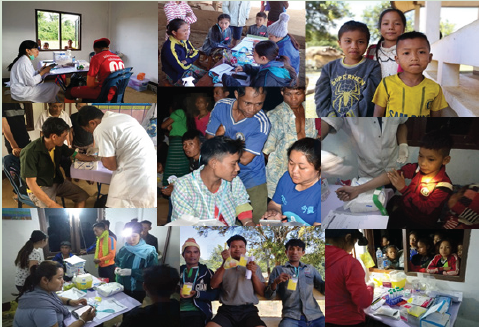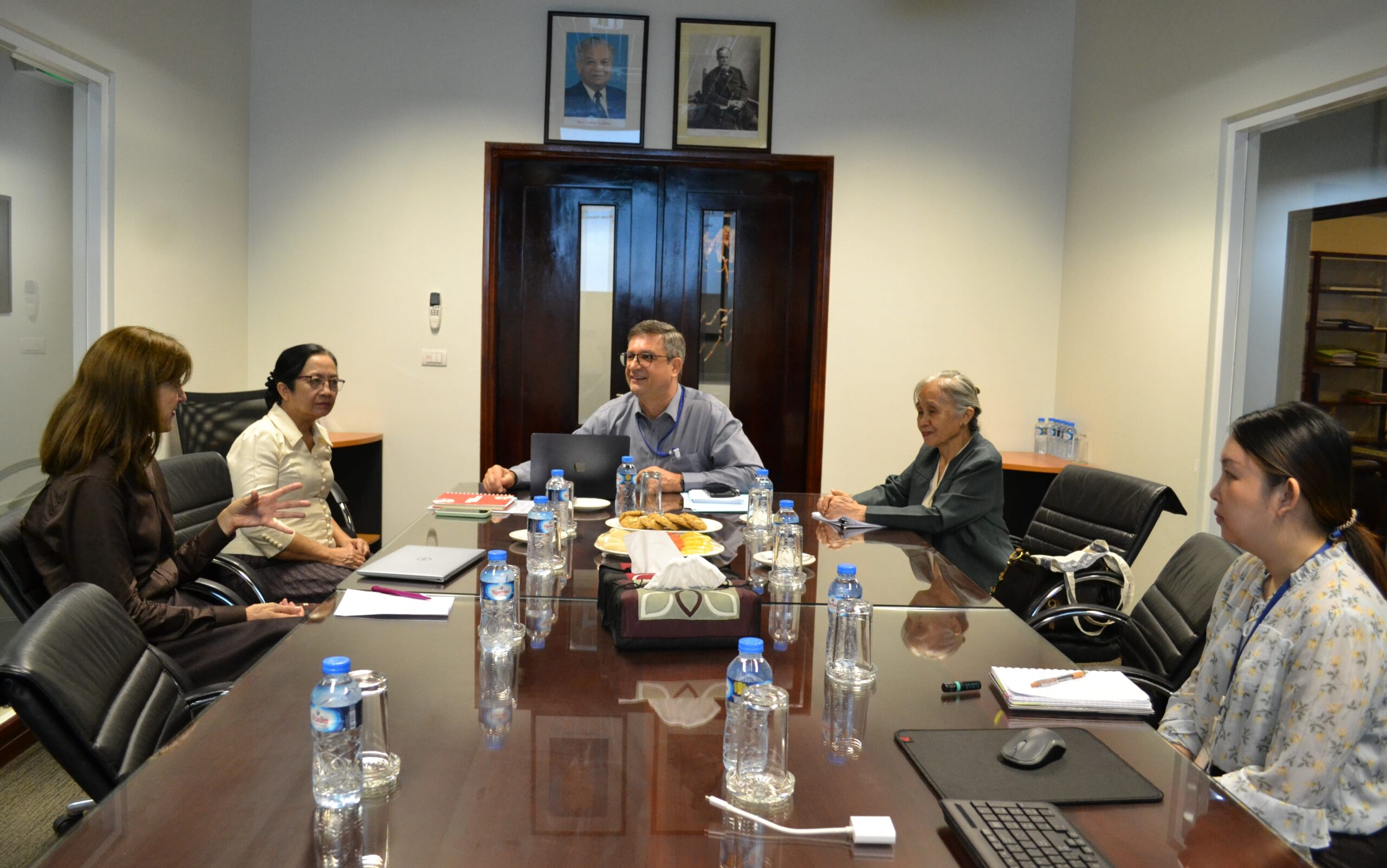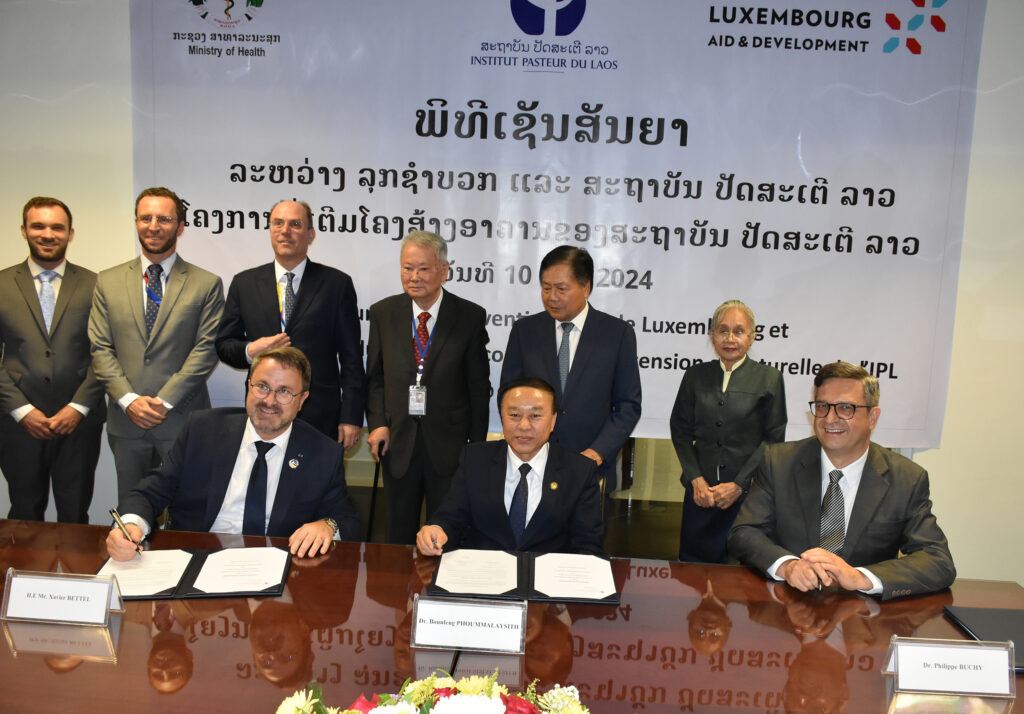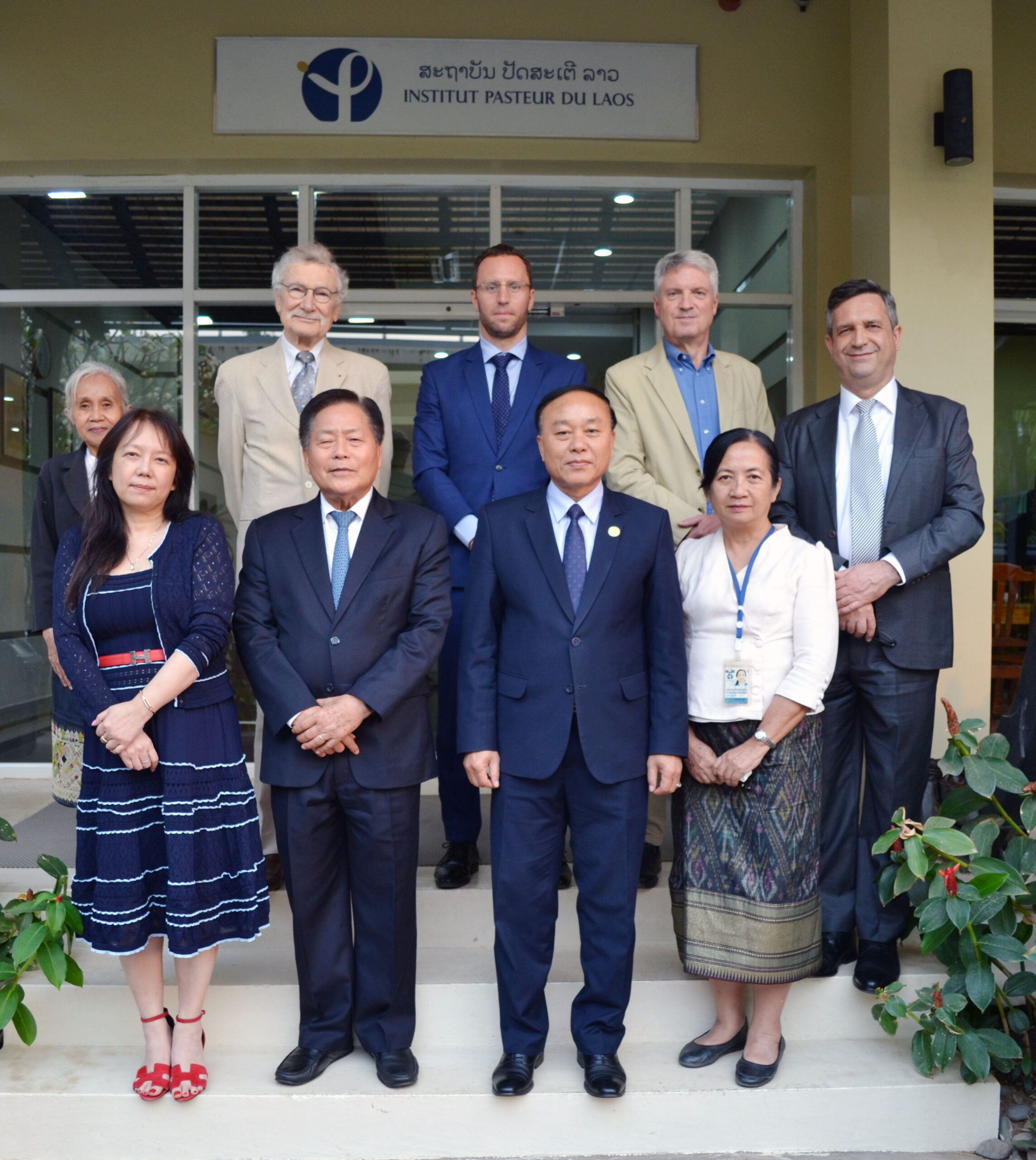An integrated approach to detect emerging pathogens and assess the infectious disease burden of a remote area within Khammouane Province in The Lao PDR.
Project Coordinators:
Virginie Pommelet (Epidemiologist, IPL)
Jeff Hertz, (Research Entomologist, NMRCA)
Dr. Paul T.Brey, (Director, IPL)
Collaborators:
Dr. Moritoshi Iwagami
Dr. Marc Grandadam
Dr. Khamsing Vongphailoth
Dr. Sengdeuane Keomalaphet
Dr. Thonglakhone Xaybounsou
Pheovaly Soundala
Thep Aksone Chindavong
Khaithong Lakeomany
Nothasine Phommavanh
Executive summary
The BiolaoPlus Project, « an integrated approach to detect emerging pathogens and assess the infectious disease burden of a remote area within Khammouane Province in the Lao PDR » was initiated at Institut Pasteur du Laos (IPL) in September 2017 with financial support from NMRC-A. This project was the first opportunity to bring together IPL’s 5 laboratories’ expertise in one field site. Furthermore, this project gave IPL the opportunity to collaborate with international partners such as the Lao- Oxford-Mahosot Hospital-Wellcome Trust Research Unit (LOMWRU) in Laos, the Mahidol-Oxford Tropical Medicine Research Unit (MORU) in Bangkok and the Institut Pasteur in Paris (IPP).
The main objectives of this project were (i) to detect emerging and reemerging pathogens and assess the infectious disease burden of a remote area (ii) to provide evidence of (with human and vector data) and ways to mitigate possible infections. The project had both a human and a vector biology component, which interacted and complemented each other.
Human component
Two hundred and two presumably healthy volunteers from 8 different villages aged 5 to 75 years were included in the study (sex ratio M/F of 1.7). The study population was mainly composed of young men, relying on agriculture and forestry activities, living in close contact with both wild and domesticated animals and highly exposed to arthropods.
Despite the presence of Anopheles mosquitoes in this area, no Plasmodium infections were detected in these healthy volunteers. The rate of infection with helminthiasis reached up to 80.2% (95%CI 73.1-87.2) with low intensity of infection. Unlike other studies in Khammouane Province, the rate of Opistorchiasis viverrini infection was very low, possibly related to cold temperatures of the water in these upland villages; hence, inadequate ecological conditions for intermediate snail hosts.
The prevalence of villagers with evidence of past exposure to rickettsiae (IgG positive) was very high, with an overall exposure rate of 80.4% (95%CI 73.7-87.1) to the three major rickettsial serogroups (scrub typhus orientia group (STG), typhus group rickettsiae (TG) and spotted fever group rickettsia (SFG)) in the 138 blood samples tested. Prevalence of STG-specific antibodies was predominant and reached up to 77.5% (95%CI 70.5-84.6) followed by 13.8% (95%CI 7.9-19.6) of SFG-specific antibodies and 6.5% (95%CI 2.3-10.7) of TG-specific antibodies. High exposure rates were found in all age groups suggesting an early and repeated exposure to these pathogens. IgG antibodies against Ehrlichia chaffensis and Anaplasma phagocytophilum were not detected in these samples.
Preliminary data using indirect ELISA testing suggested that the population of this study is exposed to a large diversity of vector-borne viruses. As such, exposure to flaviviruses was high in this population: 69.1% (95%CI 62.0-75.0) with 28.3% (95%CI 21.8-34.7) of exposure to viruses belonging to the Japanese encephalitis virus Nevertheless, anti-flavivirus cross-reactivity reached up to 30%. Indeed, serologic profile interpretation is known to be delicate because of inter-antigenic complex antibody cross-reactivity within the flavivirus genus and requires labor-intensive extended plaque reduction neutralization tests (PRNT). An alternative ELISA, the DElTAa (Discriminant ELISA for Typing Arbovirus antibodies) has been set up during this project and is under validation to improve the capacity to discriminate against the anti-arbovirus immune response. Preliminary results, confronted with PRNT, support a possible application of the DElTAa test to discriminate flavivirus (arbovirus) antigenic complex.
Vector biology component
This study described the abundance and diversity of putative arthropod vectors and assessed the risk of human exposure to known and unknown pathogens by collecting mosquitos and sandflies using human-baited double bed net (HDN) method and screened them for pathogens. A total of 51 species of mosquitoes were identified belonging to 9 genera: Aedes , Anopheles, Armigeres, Culex, Heizmania, Malaya, Mansonia, Tripteroides, and Uranotaenia. Four species belonging to the genus Sergentomyia of sandflies, 8 species of 5 tick genera, and 2 species of 2 flea genera were identified. The known mosquito vectors found in our study were: the dengue vector Ae. albopictus [1], the JEV vector Cx. vishnui s.l. [2] and the lymphatic filariasis vector Ar. kesseli [3].
Arboviral screening for alpha, flavi and phleboviruses in mosquitoes, ticks and sandflies using pan-flavi, panalpha and pan-phlebo RT-PCR, real-time PCR using dengue universal and JEV group primers and sequencing did not evidence any virus.
Ticks were screened for Rickettsia spp, Neorickettsia sennetsu, Ehrilichia spp, Anaplasma spp. Coxiella burnetii and Leptospira spp. by PCR. Unlike in previous studies done in the same area, none of these pathogens were identified. However, Rickettsia spp was identified in fleas collected during this study, which is consistent with the serological evidence of TG-specific antibodies in participants’ blood samples.
With the objective to identify unknown spillover events, agnostic descriptions of the virome of mosquitoes and sandflies using deep sequencing were conducted in IPP. A total of 1,471 mosquito-borne and 55 sandfly-borne viral communities were sequenced and analyzed. The most abundant viral families identified among RNA viruses were those usually infecting plants and invertebrates while viral families able to infect vertebrates were in minority.
Viruses possibly infecting vertebrates belonging to the Flaviviridae, Picornaviridae, Astroviridae, Hepeviridae, Phenuiviridae, Peribunyaviridae, Orthomyxoviridae, Rhabdoviridae and Reoviridae families. Several viruses belonging to families putatively containing arboviruses were phylogenetically characterized. Among the Phenuiviridae/phlebovirus family, a complete L segment of a novel phlebovirus detected in Culex vishnui was assembled. Phylogenetic analyses placed it at the root of the clade formed by mosquito-and-sandfly-borne arbophlebiviruses. Further analyses will be conducted.

Field missions
The ORFs of a potentially zoonotic tick-borne virus, Jingmen tick virus-like virus (JMTV) previously identified in ticks collected in this area were obtained after deep sequencing and finishing by PCR-sanger sequencing. Past exposure to JMTV was then tested in blood samples from the BiolaoPlus study participants using the Luciferase Immunoprecipitation System (LIPS), high-throughput serological screening of antibodies against the external proteins of viruses. No past exposure was detected so far. Other target viruses will be expressed and used as antigens for LIPS.








